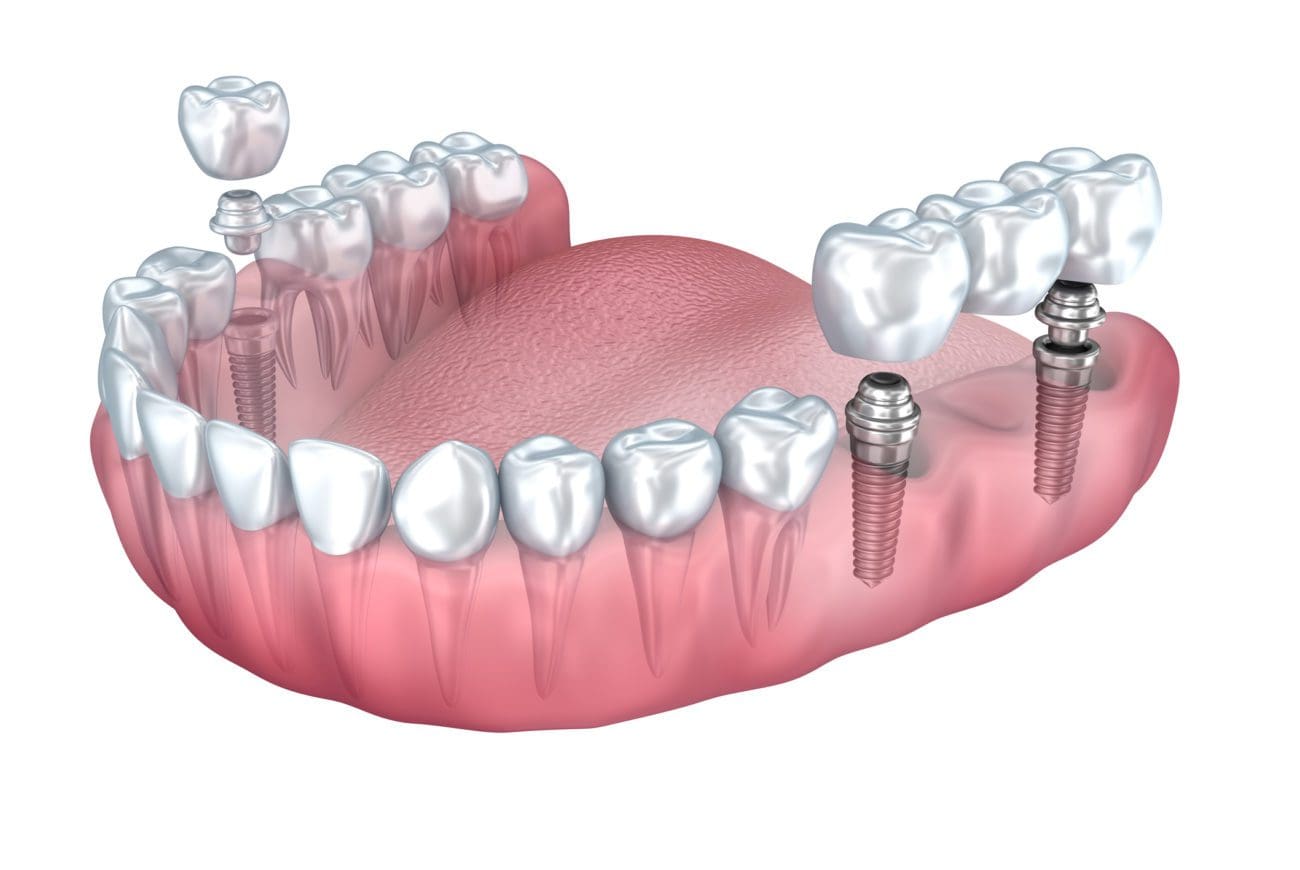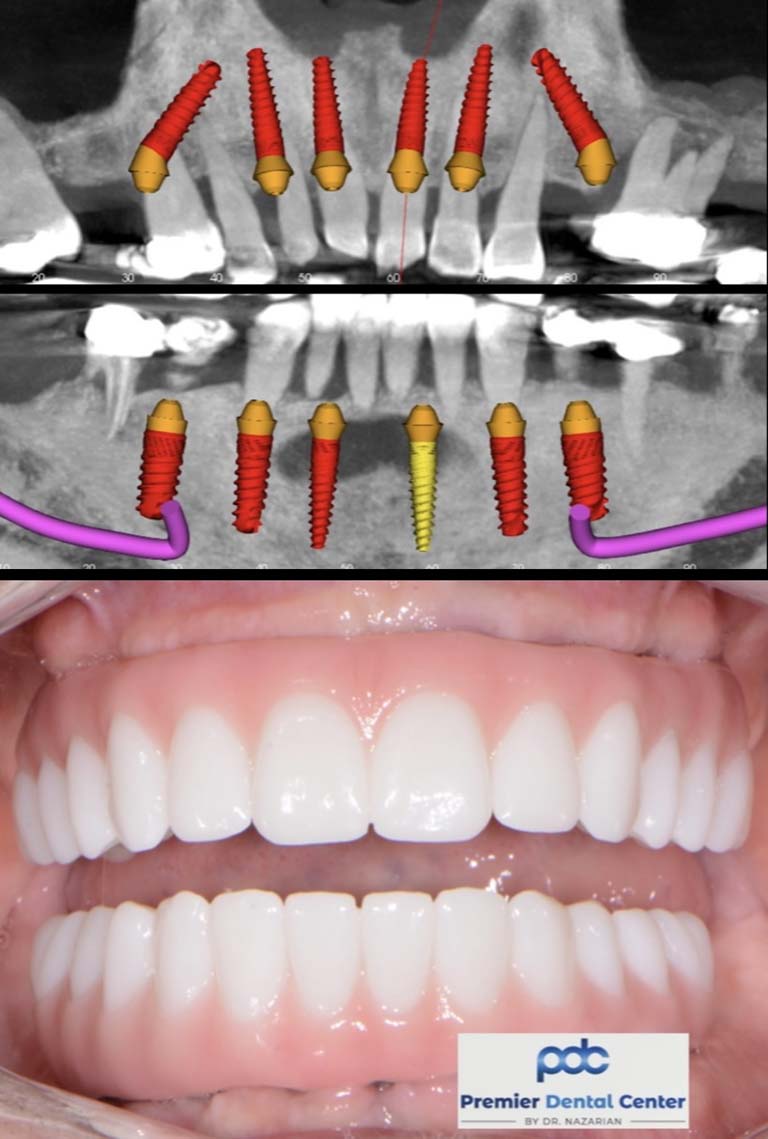The smart Trick of Dental Sense That Nobody is Discussing
The smart Trick of Dental Sense That Nobody is Discussing
Blog Article
7 Simple Techniques For Dental Sense
Table of ContentsThe Of Dental SenseThe Ultimate Guide To Dental SenseMore About Dental SenseThe Buzz on Dental Sense
are clinical tools surgically implanted into the jaw to recover a person's capacity to eat or their appearance. They give assistance for synthetic (fake) teeth, such as crowns, bridges, or dentures. When a tooth is shed due to injury or condition, an individual can experience problems such as rapid bone loss, malfunctioning speech, or modifications to chewing patterns that lead to discomfort.Oral implant systems include a dental implant body and oral implant abutment and might also include a joint addiction screw. Wisdom tooth cavity. The dental implant body is operatively inserted in the jawbone in area of the tooth's root. The oral implant abutment is normally affixed to the implant body by the joint fixation screw and prolongs via periodontals right into the mouth to support the connected artificial teeth
(https://dental-sense.jimdosite.com/)Framework of The Dental Implant System choosing oral implants, speak with your dental supplier concerning the possible benefits and threats, and whether you are a prospect for the procedure. Points to think about: Your general health is an important variable in figuring out whether you are a good prospect for oral implants, how long it will certainly require to heal, and how much time the implant might stay in area.
Cigarette smoking might impact the healing procedure and lower the long-term success of the dental implant. The recovery procedure for the dental implant body might take a number of months or longer, during which time you commonly have a momentary abutment instead of the tooth. the oral implant treatment: Very carefully comply with the oral health guidelines offered to you by your oral company.
Things about Dental Sense
Implant failure can lead to the need for one more operation to repair or replace the dental implant system. Brings back the capacity to eat Restores cosmetic appearance Assists maintain the jawbone from reducing as a result of bone loss Preserves the health and wellness of the bordering bone and gum tissues Aids keep nearby (nearby) teeth stable Boosts high quality of life Damage to surrounding all-natural teeth throughout dental implant placement Injury to the surrounding cells throughout surgery, such as sinus perforation Injury during surgical procedure (for instance, crack of surrounding jawbone) Inadequate feature, such as really feeling like the teeth do not attack together normally A feeling that the tooth hangs or turning in position resulting from an abutment screw loosening up Implant body failure (looseness of the dental implant body) because of systemic infection, which might be more probable in patients with uncontrolled diabetes because of local infection why not find out more in bone and gums supporting the dental implant body because of postponed recovery, which may be extra likely in clients who smoke Trouble cleaning up the gums around the dental implant, leading to bad dental hygiene Untreated periodontal illness Post-surgical tingling as a result of nerve impingement or damage Always inform wellness care carriers and imaging service technicians that you have oral implants before any magnetic resonance imaging (MRI) or x-ray treatments.
FDA is not aware of any kind of negative events reported for MRI or x-ray procedures with dental implants. Oral implants systems are typically constructed from products that comply with international consensus standards of the International Organization for Standardization (ISO) or ASTM International. These criteria have information of what makes a safe material.

A dental implant is a structure that changes a missing tooth. With screw-like devices, the surgeon inserts a dental implant right into the jawbone, and it acts as an anchor for a man-made tooth, called a crown. A tool called a joint connects the synthetic tooth to the dental implant. The crown is personalized to fit the individual's mouth and match the shade of their teeth.
The 25-Second Trick For Dental Sense
Some people are not eligible for dental implant surgery. It is for oral doctors to operate people with: acute illnessuncontrollable metabolic diseasebone or soft cells condition or infectionIf these concerns are settled, an individual can have the surgery. In, oral specialists abstain from operating on individuals with: If people with any one of the above undertake dental implant surgical procedure, there is a greater risk of the dental implant stopping working.

Dental implant surgical treatment is a tailored procedure. It's not the same for everyone. The adhering to provides a general overview of what you can expect your dental professional, oral doctor, periodontist or prosthodontist to do: Place the implant operatively. Offer you time to recover. Affix the article and final crown, bridge or denture.
Next, your cosmetic surgeon will carefully position the dental implant right into your jaw. If your dental implant is near the front of your mouth, your dental professional will make a short-lived tooth for you to use until you recover.
Some Known Details About Dental Sense
Your service provider can inform you what to expect in your situation. Throughout the recovery phase, your jawbone must fuse to the oral implant. This process, called osseointegration, is essential for stability and long-lasting success. This procedure can take anywhere from 3 to nine months. Sometimes, it might take longer.
When your dental implant heals, your dental professional can affix the abutment (small port article) and your last restoration (crown, bridge or denture). This normally takes concerning one hour to complete and may need a 2nd small surgical procedure. You shouldn't feel any type of discomfort throughout your dental implant treatment since your copyright will utilize medication to numb your gums.
Report this page